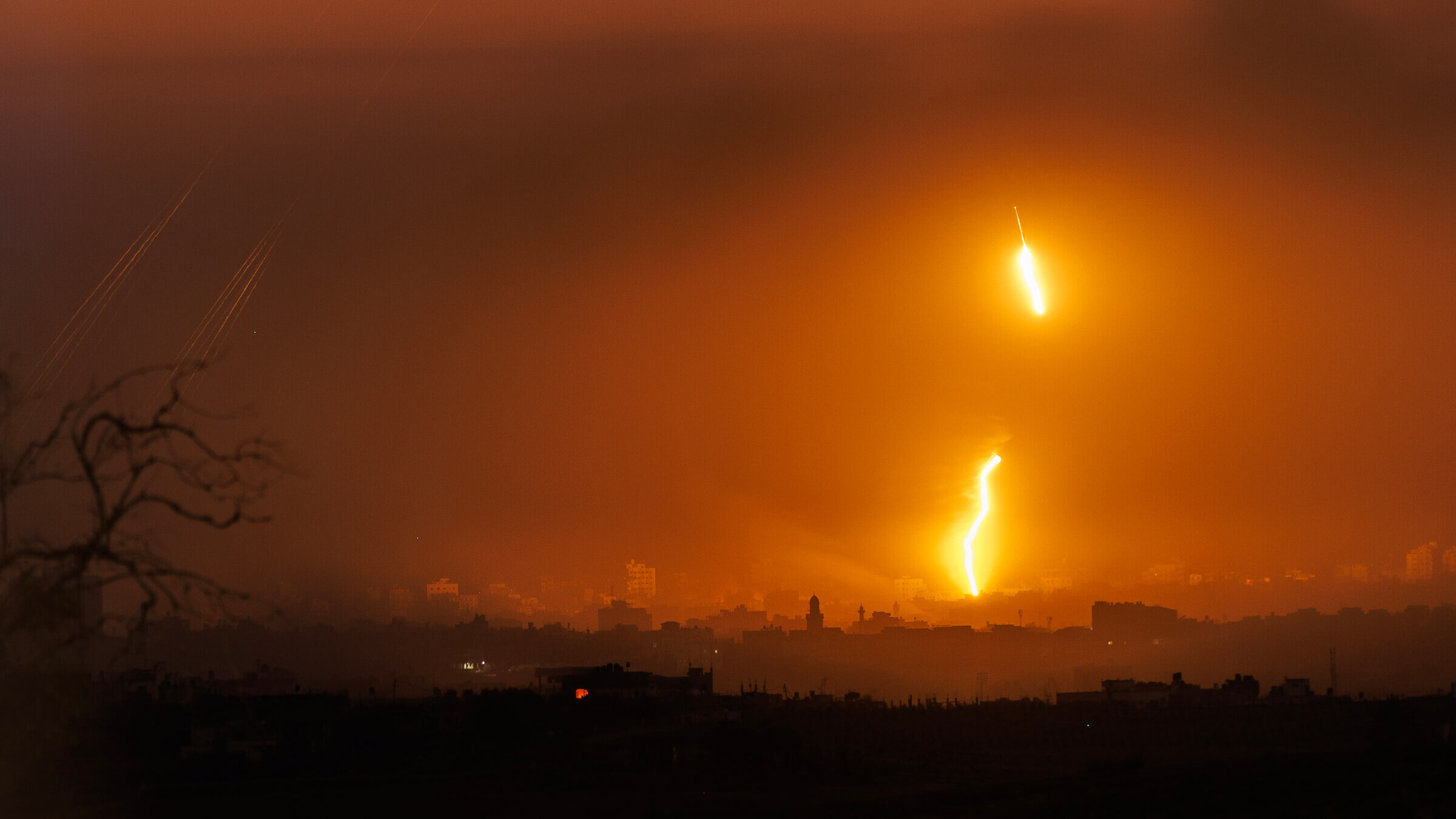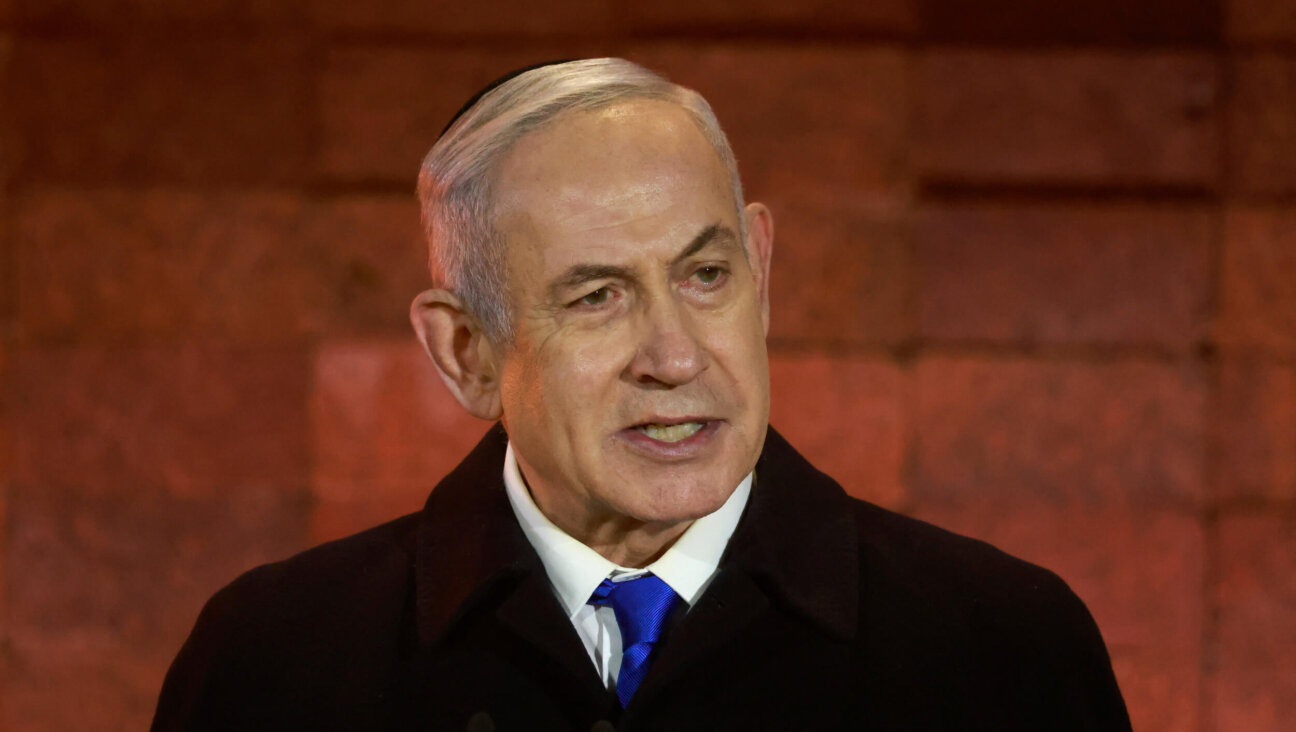How the Israel-Hamas war could spiral into a global conflagration — with the U.S. deeply engaged
Not since the wars in Iraq and Afghanistan has Washington undertaken so large a military buildup

Rockets and “light bombs” seen over the Gaza strip from Sderot on Monday. Photo by Dan Kitwood/Getty Images
In hushed tones, friends and family have been asking me whether our war with Hamas could spin out of control. Could Israel find itself in the eye of a far more cataclysmic conflict? Could the U.S. be dragged into this morass, possibly along with other powers? “Are we on the verge of World War III?” they ask.
My response is that the dangers of escalation are real, but can be mitigated by an unequivocal American commitment to deter Iran and Hezbollah. The world watches the U.S.-Israel alliance, I explain, and regards it as a barometer of American power. A global conflict is avoidable if the United States continues to stand steadfastly alongside Israel, the cornerstone of Middle East stability.
That was the conclusion of my 2019 article in The Atlantic titled “The Coming Middle East Conflagration.” I predicted that a single spark — back then, an Israeli attack on Iranian assets in Syria — could ignite a wildfire that would swiftly consume the region. Much of the world might soon became engulfed.
Prophecy being an inexact vocation, there was much I got wrong. Though war indeed erupted, its spark came not from Syria but from Gaza — a sideshow in my 2019 scenario — and my assumption of Israel’s military readiness proved tragically inaccurate. More prescient, though, was my prognosis that Iran, emboldened by American isolationism and Israel’s political instability, would precipitate a conflict. And I still believe the U.S. and other powers could be dragged into the fray.
In fact, the U.S. is already in the fray. To augment Israel’s defense and deter Hezbollah and Iran, President Joe Biden has dispatched a veritable armada to the Eastern Mediterranean and Persian Gulf.
Escorted by four cruisers, six destroyers, and an undisclosed number of submarines are the U.S. Navy’s newest aircraft carriers, the Ford and the Eisenhower, each bristling with as many as 90 fighter aircraft. Also on board are an array of sea-to-air and sea-to-ground missiles, and thousands of U.S. Marines. The Pentagon has issued “prepare-to-deploy” orders to units positioned outside the Middle East, and activated anti-missile batteries throughout the region.
Not since the wars in Iraq and Afghanistan has the U.S. undertaken so large a military build-up. “No one should take advantage of this moment to escalate, to further attacks on Israel,” Secretary of State Antony Blinken warned, “or, for that matter, attacks on us and our personnel.”
The sheer magnitude of this force puts pressure on the Biden Administration to act if the intended deterrence fails. It is as though the president has drawn a very big pistol; hesitating to shoot it in the face of brazen provocations would send a dangerous signal of fragility to the world.
Still, Israeli journalists keep asking me, “Will Biden pull the trigger?” Here, too, my response is, “Yes.”
In fact, the trigger has already been pulled. The downing by the USS Carney on Oct. 19 of three Israel-bound rockets and many drones fired by Iranian-backed forces in Yemen signified the opening shots. The U.S. is officially engaged.
But further engagement is certainly not America’s goal. On the contrary, news organizations in Israel and the U.S. have reported that the White House is pressuring Israel both to refrain from launching a preemptive strike against Hezbollah and to delay the Israel Defense Forces’ full-scale ground operation in Gaza. In Syria and Iraq, meanwhile, pro-Iranian militias have fired drones and rockets at U.S. military bases and called on their personnel to evacuate.
The U.S. response so far has been measured, but Secretary Blinken has warned: “We expect there is a likelihood of escalation.”
How, then, might what is still a localized conflict between Israel and Hamas mushroom into a regional or ultimately a global war?
One possible scenario would be triggered by Israel expanding its ground invasion of Gaza. With its international legitimacy eroded, its soldiers exhausted from long days and nights of brutal fighting, and its ammunition stores strained, Israel would present an attractive target to Hezbollah in Lebanon.
A Shiite terrorist organization operated by Iran, Hezbollah would be loath to let Sunni Hamas take all the credit for singularly battling the Zionist enemy. Hezbollah’s arsenal of 150,000 rockets — most of them far bigger, longer range, and more accurate than those fired from Gaza — has not been built for show. If Iran gives the green light, the IDF estimates that Hezbollah could unleash 4,000 rockets per day, overwhelming Israel’s missile defense systems.
The tactical danger of Hamas would quickly be surpassed by the strategic threat of Hezbollah. The United States would have to step in.
That intervention would be strictly defensive — shooting down Hezbollah rockets and drones. But U.S. bases throughout the region, along with the Navy strike force at sea, would be exposed — and possibly targeted. One major attack claiming U.S. casualties could then elicit a large-scale military response against Hezbollah as well as its Iranian masters. Washington and Tehran would find themselves in a de facto state of war.
That battle would confined to the Middle East. But Russia could then take advantage of Washington’s preoccupation with Iran and Hezbollah to mount a major counter-offensive in Ukraine. The Chinese might also seize the opportunity to launch their long-anticipated invasion of Taiwan.
Many of the deconfliction tools available during the Cold War — the famed Hot Line between the White House and the Kremlin, for example — no longer exist. Few are the means for preventing or even decelerating an escalation of international, and potentially catastrophic, dimensions.
I am not, in fact, a prophet, and nothing in this scenario is inevitable. Many steps can be taken to contain the conflict and avert an apocalyptic outcome. As I wrote four years ago in that Atlantic article, and as I assure my family and friends today, Washington can greatly reduce the chances for escalation by making the goals of its Middle East mission crystal-clear.
The Biden Administration must detail the measures it is willing to take should Hezbollah and Iran attempt to open a second front. The Russians and the Chinese must be put on notice that the United States will not be distracted by the current crisis.
Above all, the White House must continue to demonstrate its unconditional support for Israel as this war progresses, regardless of the difficulties that undoubtedly lie ahead. Sticking with Israel sends an incontrovertible message to the world of American resolve. That is the message that President Biden has sent, and our common enemies — America’s and Israel’s — are listening.

















